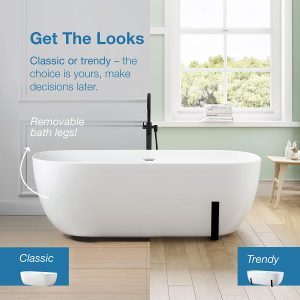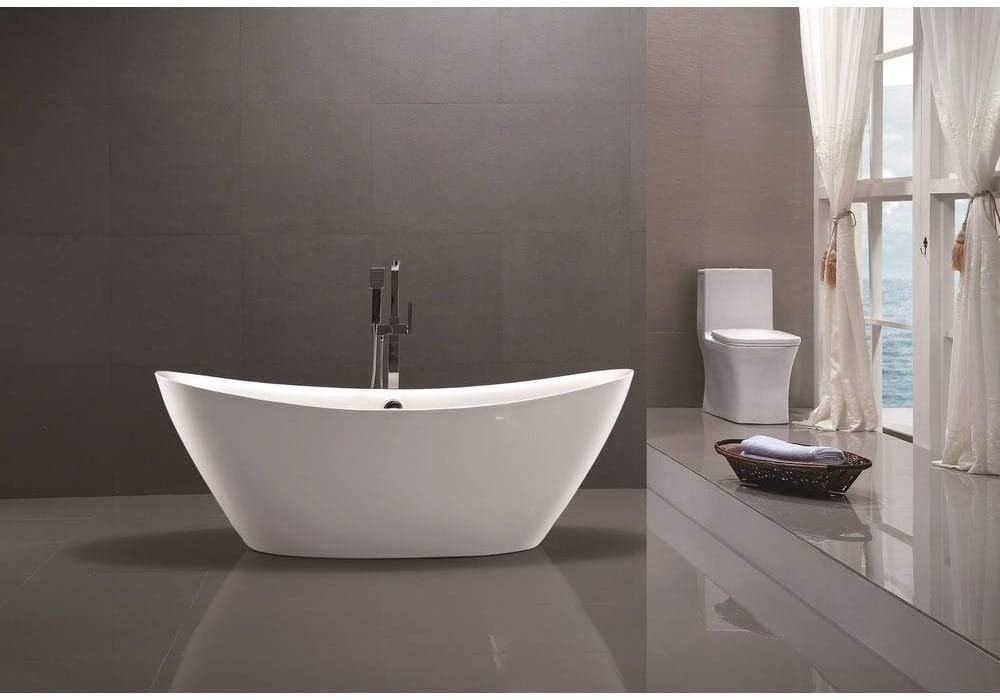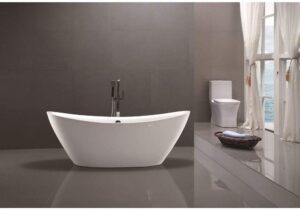The bathtub is a very important feature in your bathroom. If you want to add a traditional feel to your home, installing one of the best freestanding bathtubs in the family bathroom is something you might want to consider.
With that in mind, below we will outline some of the pros and cons of freestanding designs to help you decide whether to opt for one over a conventional built-in bath.
Benefits
• Placement Flexibility – While built-in bathtubs have to be installed against a tiled wall, freestanding models can be placed anywhere in the bathroom — even in the middle of the room if the room is large enough. For those that don’t want lots of wall tiles in their bathroom, freestanding baths are a good choice.
• Vintage Style – Freestanding tubs are a favorite with those that like nostalgia as they give a bathroom a vintage touch that is reminiscent of times gone by.
• Easy To Repair – With build-in bathtubs, replacing broken taps and fixing leaks can often be difficult as water pipes are often inaccessible. Meanwhile, with a freestanding design, all the water pipes can be seen and taps can be easily repaired.
• Choice – There are an endless number of different freestanding bathtub designs to choose from, including antique copper, clawfoot, cast iron, roll top, slipper, 2-person, cylindrical, and more.
More at https://www.brandreviewly.com/best-freestanding-bathtub/.
Drawbacks

• Showerless – Unlike with a built-in tub, adding a shower to a freestanding bathtub is impractical. While it is possible to install a ceiling-mounted showerhead above a freestanding bath, you will also need to purchase wrap-around shower rails and curtains, which can look very outdated.
• No Storage Space – There is no ledge around freestanding tubs to place all your bath foam bottles, shampoos, etc. However, you can buy a rolling caddie to store such products within easy reach.
• Extra Depth – Freestanding tubs tend to be deeper than conventional built-in designs, which can make getting out of them more difficult and potentially more hazardous. Their deeper design also makes it more difficult to lean over the edge to wash pets and small children.
• Heavy Weight – Many freestanding bathtub designs are considerably heavier than plastic built-in designs. As a result, those with upstairs bathrooms will need to check that the floor can support the weight of the structure.
• Expensive Cost – There is no getting away from the fact that freestanding bathtubs are more expensive than conventional designs, so they often aren’t an option for those with a limited budget.
Featured above are some of the pros and cons of the best freestanding bathtubs. Perhaps such a design is the perfect choice for your home when you next remodel your bathroom? After all, who wouldn’t want to feel like they are staying in a luxury hotel and spa every time they take a bath?
The main reasons to avoid freestanding designs are mainly practical ones and, of course, some bathrooms are not large enough to accommodate such structures.



